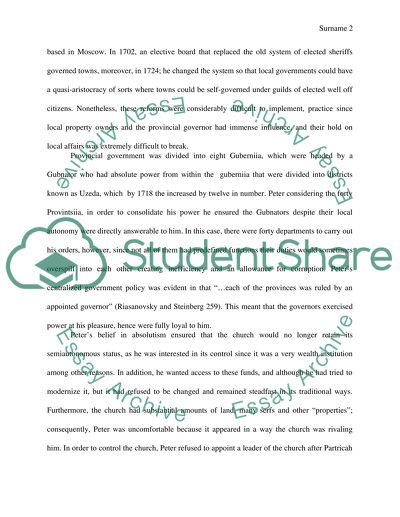The Reforms of Peter the Great Essay Example | Topics and Well Written Essays - 1000 words. Retrieved from https://studentshare.org/history/1459036-the-reforms-of-peter-the-great
The Reforms of Peter the Great Essay Example | Topics and Well Written Essays - 1000 Words. https://studentshare.org/history/1459036-the-reforms-of-peter-the-great.


